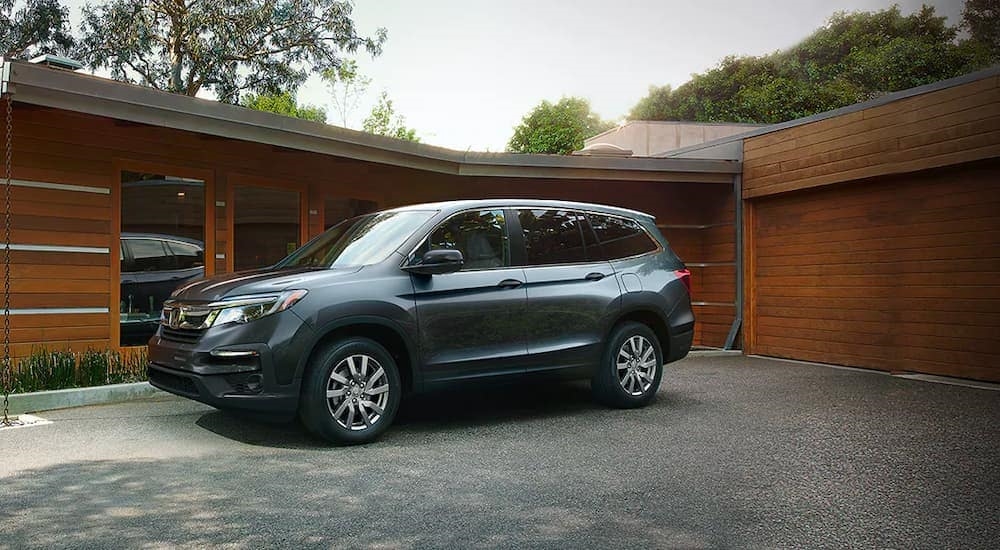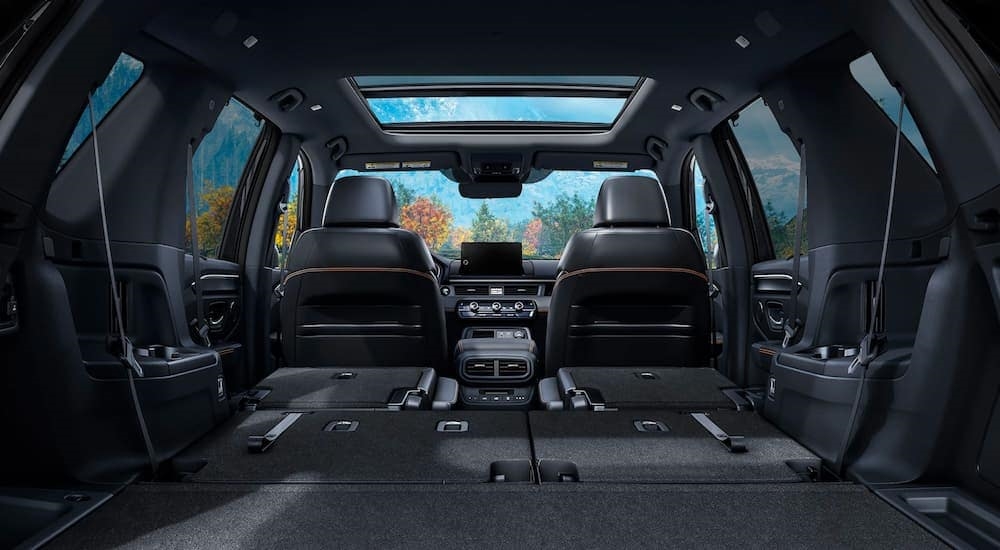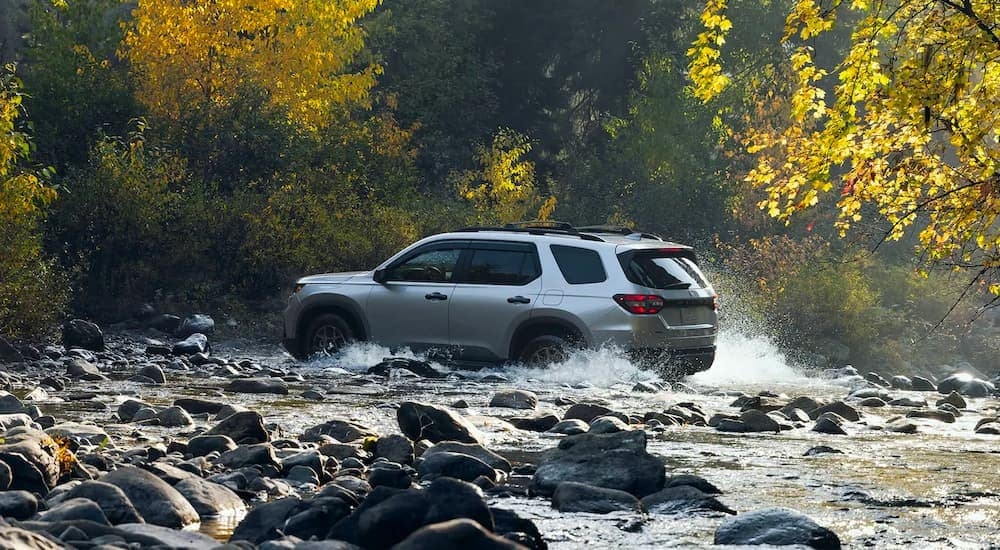As automotive reputations go, Honda is readily associated with practicality and longevity. This association began when Honda made its mark in the American automotive industry and defined itself with sedans like the Civic and Accord throughout the 1960s and 1970s. Since then, Honda has expanded its reputation and fleet, which you can now explore at a Honda dealer like Klein Honda.
The new millennium saw notable growth for Honda and its lineup when the automaker joined the midsize SUV craze and introduced the Pilot in 2003. The Pilot immediately distinguished itself as an alternative to the traditional SUV, earning it a prominent place in Honda’s lineup and widespread success. Today, the Pilot shows that an SUV of its size can be functional and sophisticated, practical and comfortable, versatile and affordable. So, how does the Pilot accomplish such a feat? From past to present, here’s a closer look at the Pilot’s impact on the Honda lineup.
Defying the Standards
The Pilot made a significant impact when it debuted in 2003, showing Honda’s ingenuity and influence in the industry. While its rivals were renowned for their truck-like performance, the Pilot took a different approach and handled more like a sedan because of its unibody platform. The result was impressive, with the Pilot blending responsive handling with the efficiency expected of a Honda sedan.
While using a unibody platform is widespread today on models from Ford, Kia, Toyota, and Chevrolet, the Pilot marked a shift in the industry and reflected Honda’s keen awareness of what drivers want and need in an SUV. Today, the Pilot still relies on a unibody platform but has grown in size, blending its larger footprint with a more aggressive design that adds to its appeal as one of Honda’s most popular SUVs. This impeccable combination ensures drivers don’t have to sacrifice ride quality or comfort because the Pilot delivers both (and much more) without compromise.
Evolving Design
Despite sharing a platform with the Odyssey minivan, the 2003 Pilot differentiates itself with its bold, boxy design to appeal to the minivan averse. With each design refresh and new generation, Honda keeps the Pilot fresh and introduces modern design details, improved performance, and innovative features that add to its value. This evolution showcases how closely Honda listens to its customer base. How so?
Designed as “the Ultimate American Family Adventure Vehicle,” the Pilot maintains its boxy design throughout its first and second generations, with Honda adding updated front and rear fascias and new lighting. The second-generation Pilot, which debuted in 2009, introduces drivers to a larger and bolder SUV. The growing demand for more passenger and cargo capacities inspired Honda to expand the Pilot’s wheelbase, stretching the cabin and giving the SUV a taller and boxier profile.
By the third generation, the Pilot likens itself to its minivan sibling, swapping its signature boxy design for a sleeker profile with softer lines. The new design also introduces another expansion, with Honda stretching the Pilot’s wheelbase and lightening its curb weight for improved performance. Although the Pilot’s sleeker profile matches its updated interior, it looks too much like a minivan for many drivers. Yet again, Honda listens, adding appeal to the Pilot lineup by introducing the adventurous TrailSport trim in 2022.
Although the Pilot can handle every family-sized need, from comfort to cargo, the TrailSport breathes new life into the SUV with its lifted suspension and knobbier tires. As a result, it generates more excitement for the Pilot, which sees another major upgrade for 2023. This time, it returns to its roots with a rugged, boxier design and a more adventurous and capable TrailSport trim. The 2023 Pilot TrailSport doesn’t just look the part of an adventurer but can handle itself on modest trails with its exclusive TrailSport wheels and all-terrain tires, intelligent all-wheel drive system, an off-road-tuned suspension, and TrailWatch camera. With the rising popularity of off-roading in America, there’s no question that Honda is paying attention.
Safety Is Always a Priority
Driver safety has been a top priority for Honda throughout its history in the automotive industry, and that priority is apparent in models like the Pilot. Unsurprisingly, how Honda engineers that safety varies from generation to generation. For example, the first-generation Pilot prioritizes safety and relies on the technology and features available at the time. In 2003, those advanced features included the Pilot’s comprehensive airbag system, three-point seatbelts, passenger airbags, and exceptional build quality for class-leading crash protection.
By its second generation, the Pilot introduces Honda’s new Advanced Compatibility Engineering (ACE) body structure for improved crash protection in any situation, including a pedestrian injury mitigation feature in the front of the SUV. In addition, Honda equips the second-generation Pilot with Vehicle Stability Assist, otherwise known as Electronic Stability Control. These features complement other active and passive safety tools, like the front and side airbags, head restraints, the Lower Anchor and Tether for Children (LATCH) positions, and antilock brakes.
The third and fourth-generation models see a vast improvement in safety features due to ongoing advancements in the industry. Honda introduces the Honda Sensing suite on the third-generation Pilot, which outfits the SUV with a standard multi-angle rearview camera and a host of available upgrades. The suite includes blind-spot monitoring, a Collision Mitigation Braking System, Adaptive Cruise Control, Lane Departure Warning, Lane Keeping Assist System, Forward Collision Warning, Road Departure Mitigation, and a Rear Cross Traffic Monitor. On the fourth-generation Pilot, introduced in 2023, the Honda Sensing suite becomes standard across the fleet.
Functional Versatility
As a three-row SUV, the Pilot appeals to families because it’s large enough to accommodate passengers and cargo, but it’s not too large that it handles like a land yacht. Moreover, Honda designs the Pilot so that it’s functional and versatile. These characteristics make it easy to take advantage of the Pilot’s eight-passenger seating capacity and its vast cargo space without sacrificing anyone’s comfort or leaving cargo behind.
The first-generation Pilot set this benchmark with its 60/40 split-folding second and third-row bench seats. The flat-folding seats are easy to stow and let you take advantage of the 2003 Pilot’s 90.3 cubic feet of cargo space. In addition, the Pilot’s flat cargo floor is advantageous and works well with its wide stance, making it the only vehicle in the segment to accommodate items four feet long.
With each generation, Honda has improved the Pilot’s functional design features. For example, the Pilot’s stretched wheelbase over the years translates to more room for passengers and cargo. This expansion has also ushered in easier accessibility, with Honda offering a one-touch second-row seat in 2016. The fourth-generation Pilot is even more impressive and introduces a stowable second-row seat on the 2023 lineup that lets you configure the cabin to your needs. You can stow the seat in its dedicated storage compartment and quickly reinstall it to make room for one more in the cabin.
Staying True to Its Roots
Honda is a brand you can rely on mile after mile and year after year. This reliability defines the entire Honda lineup and adds to the appeal of popular SUVs like the Pilot. How so? The Pilot is not only a reliable SUV in the sense that it can safely and comfortably haul you and your family from Point A to Point B, but because of its versatility and functional design, you can also rely on it to deliver exactly what you need. The Pilot helped set new standards in the segment when it debuted in 2003, proving an SUV could handle like a sedan without compromising its style or cabin volume. It’s remained true to those standards over the years while introducing new features and technologies that answer our evolving needs as drivers. It’s a winning combination that reflects everything drivers love about the Pilot.



